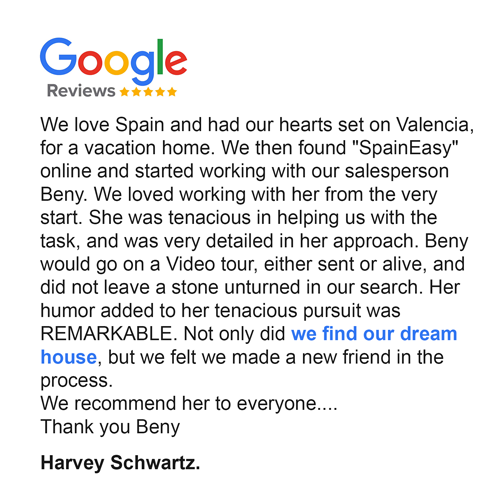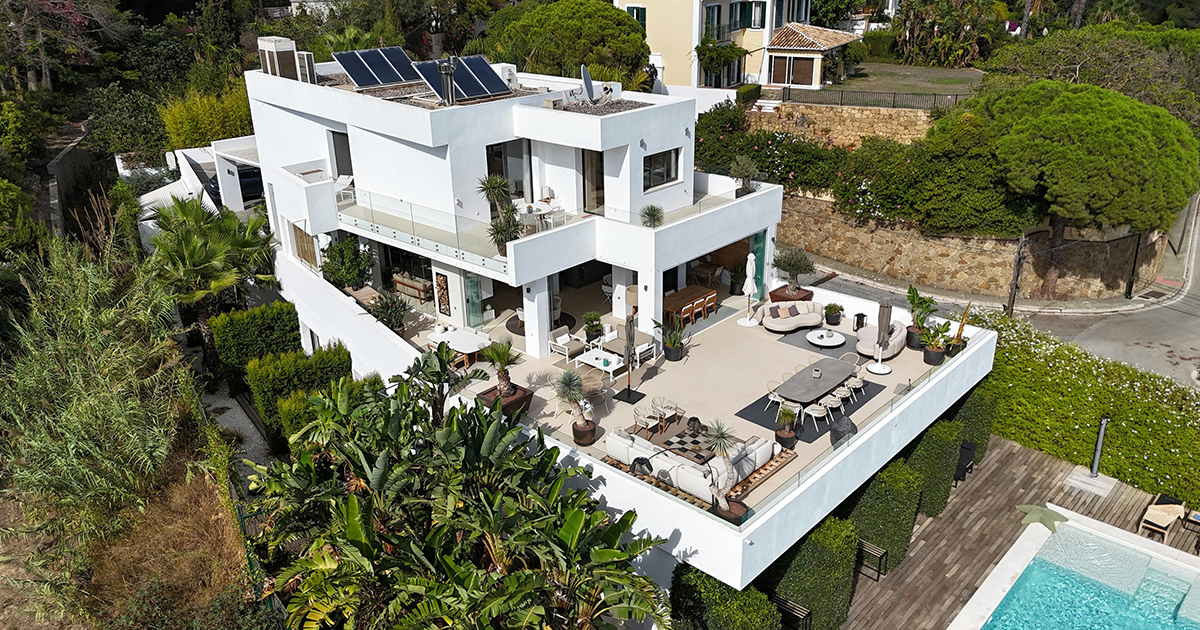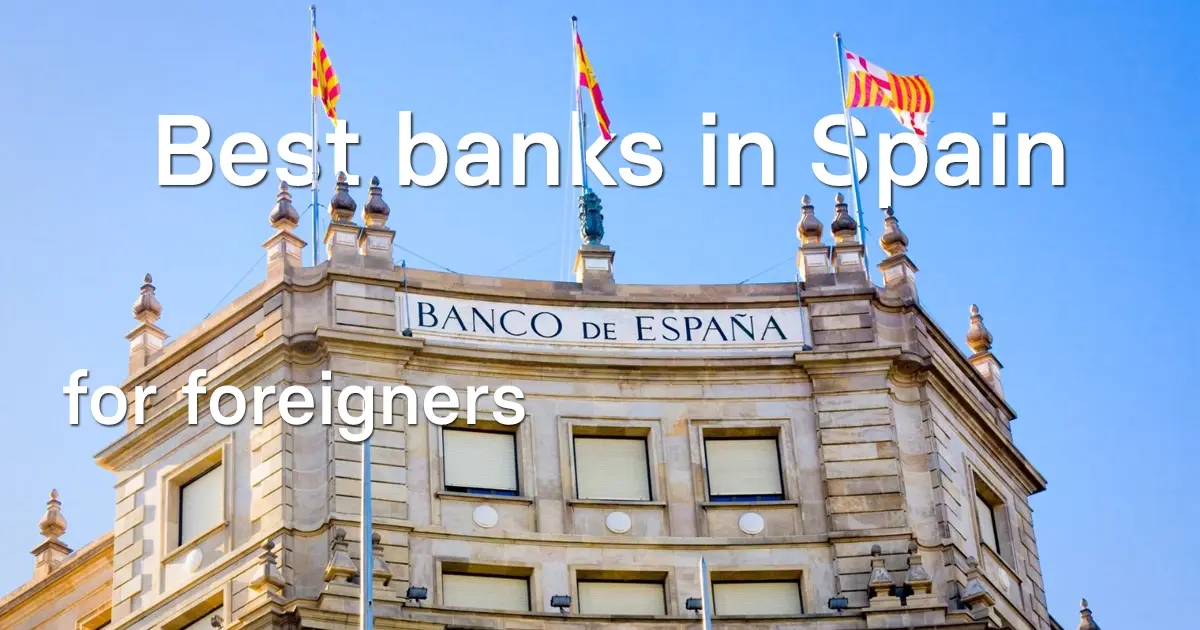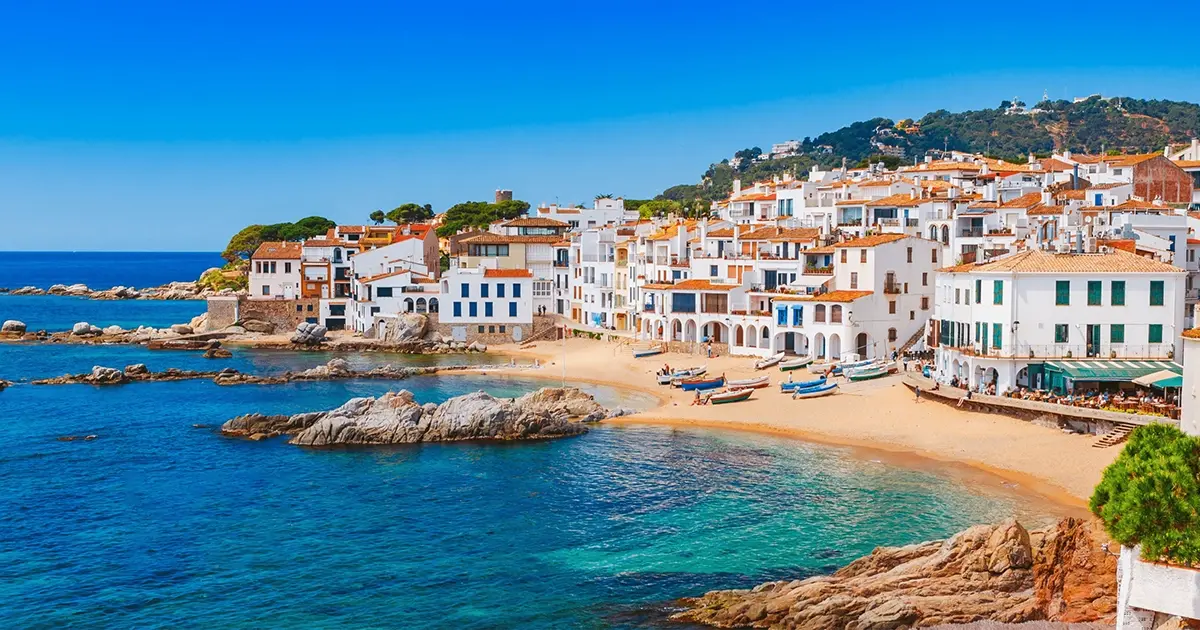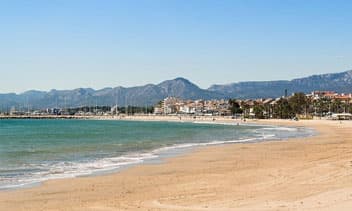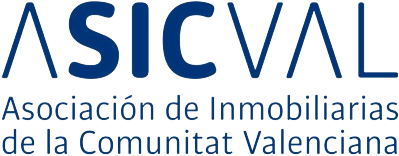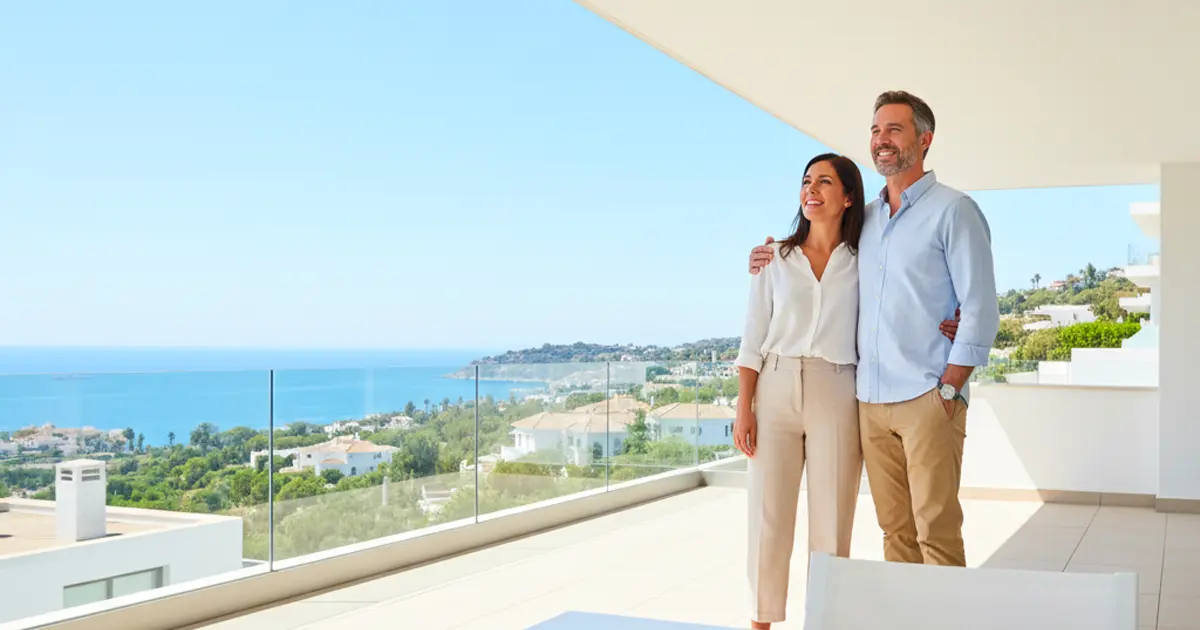
Financing Property in Spain: Guide for Foreign Buyers (2025)
Last update: September 22, 2025
Reading time: 12.2 min
Buying a home in Spain continues to attract thousands of retirees, expats, and international investors every year. The country’s Mediterranean lifestyle, affordable cost of living compared to much of Europe, and stable real estate market make it a preferred destination for those seeking a second home, a place to retire, or a profitable rental investment.
But behind the dream lies one of the most important challenges: financing the purchase. For foreigners—and especially for Americans unfamiliar with the Spanish system—understanding mortgage conditions, down payment requirements, and closing costs is essential before making a commitment.
This guide provides a complete overview of financing property in Spain in 2025. You’ll discover the available mortgage options, the expected down payment, the additional costs to prepare for, and the documents needed to secure approval. Whether you plan to buy a beachfront apartment, a countryside villa, or an urban investment property, this guide will help you finance your purchase with confidence.
No Time to Read It All? Here’s the Quick Summary:
Budgeting Your Property Purchase
Combine Property Price and Closing Costs
When planning your purchase in Spain, don’t stop at the advertised property price. Buyers should add 10–15% in closing costs, which include property transfer tax (ITP) or VAT (IVA on new builds), notary and registry fees, bank charges, and mandatory insurance.
For example, a €250,000 apartment (~$270,000) can quickly reach €280,000 (~$300,000) or more once all costs are included.
Use Simulators to Estimate Borrowing Capacity
Spanish banks, international mortgage brokers, and even specialized expat platforms provide online mortgage calculators. These tools allow you to simulate monthly repayments based on the loan amount, interest rate, and duration. Running several scenarios helps you compare Spanish bank offers with potential financing options in your home country.
Anticipate Ongoing Ownership Costs
Beyond the initial purchase, homeowners face regular expenses. The main ones include:
- IBI (Impuesto sobre Bienes Inmuebles): annual property tax paid to the local municipality.
- Community fees: shared costs for building maintenance, pools, elevators, or gardens.
- Insurance: property and sometimes life insurance required by banks.
- Maintenance: repairs, utilities, and seasonal upkeep—especially important for second homes.
Failing to account for these hidden costs can affect your repayment capacity and overall budget.
Exploring Financing Options
Spanish Bank Mortgages for Foreigners
Spanish banks are accustomed to working with international buyers. Non-residents can typically borrow 60–70% of the property value (LTV), while residents may access up to 80%.
Key requirements include:
- A NIE (Número de Identificación de Extranjero), the Spanish tax identification number.
- A Spanish bank account, necessary for mortgage payments and ongoing expenses.
- Proof of stable income (salary slips, tax returns, bank statements).
Well-known banks with dedicated expat services include CaixaBank, Banco Sabadell, and BBVA.
US Mortgages for Property Abroad
Obtaining a US-based mortgage to buy property in Spain is rare but not impossible. Some international divisions of major US banks and certain private banks offer solutions, usually for high-net-worth clients. Expect:
- Higher collateral requirements (often assets in the US).
- Bigger down payments than in Spain (often 40–50% of the purchase price).
- Higher interest rates compared to standard US mortgages.
This option suits wealthy individuals rather than average buyers.
Financing from Other Home Countries (UK, Canada, etc.)
Buyers from countries such as the UK or Canada sometimes use financing in their home country by leveraging property they already own as collateral. International mortgage brokers can be helpful in arranging cross-border financing and comparing multiple offers.
Alternative Financing Options
If traditional mortgages are not accessible or sufficient, there are alternatives:
- Personal loans: easier to obtain, but amounts are limited (up to €75,000 / ~$81,000) and interest rates are higher.
- Asset-backed financing: pledging securities or savings accounts as collateral.
- Mixed financing: combining a Spanish mortgage with financing in your home country to balance risks and costs.
Comparison of Financing Options
| Financing Option | Advantages | Drawbacks |
|---|---|---|
| Spanish mortgage | Hypothecates the property in Spain; banks used to foreign buyers; LTV 60–70% | Requires NIE & Spanish account; high down payment; legal/admin in Spanish |
| US / home loan | Familiar banks; easier admin if you have assets locally | Often needs collateral; limited access; may not cover 100% purchase |
| Personal loan | Quick approval; no mortgage required | Limited amounts (≤ €75k / ~$81k); high interest rates |
| Asset-backed / mixed | Flexible; can optimize borrowing costs | Complex to set up; reserved for wealthy profiles |
Spanish mortgage
Advantages: Hypothecates the property in Spain; banks used to foreign buyers; LTV 60–70%
Drawbacks: Requires NIE & Spanish account; high down payment; legal/admin in Spanish
US / home loan
Advantages: Familiar banks; easier admin if you have assets locally
Drawbacks: Often needs collateral; limited access; may not cover 100% purchase
Personal loan
Advantages: Quick approval; no mortgage required
Drawbacks: Limited amounts (≤ €75k / ~$81k); high interest rates
Asset-backed / mixed
Advantages: Flexible; can optimize borrowing costs
Drawbacks: Complex to set up; reserved for wealthy profiles
Down Payment and Additional Costs
Down Payment Requirements
Spanish banks require a substantial down payment compared to what US buyers may be used to.
- Residents: usually 20–30% of the purchase price.
- Non-residents: typically 30–40%, which applies to most American buyers.
- Investment properties: banks may demand 40–50%, as they are considered higher risk.
This down payment is separate from the closing costs, which must also be budgeted.
Closing Costs Breakdown
In addition to the purchase price and down payment, expect 10–15% in closing costs, including:
- Property Transfer Tax (ITP): 6–10% on resale properties, depending on the region.
- VAT (IVA): 10% on new-builds (7% in the Canary Islands).
- Notary and Land Registry fees: about 1–2%.
- Bank fees: mortgage arrangement fees + mandatory property appraisal (tasación) ranging from €300–700 (~$325–750).
- Insurance: property insurance (mandatory) and, in some cases, life insurance linked to the loan.
Example Scenarios by Property Price
| Property Price | Down Payment (Resident) | Down Payment (Non-Resident) | Closing Costs (10–15%) | Total Cash Needed |
|---|---|---|---|---|
| €150,000 (~$162,000) | €30,000–45,000 (~$32,500–49,000) | €45,000–60,000 (~$49,000–65,000) | €15,000–22,500 (~$16,000–24,500) | €60,000–82,500 (~$65,000–89,500) |
| €250,000 (~$270,000) | €50,000–75,000 (~$54,000–81,000) | €75,000–100,000 (~$81,000–108,000) | €25,000–37,500 (~$27,000–40,500) | €100,000–137,500 (~$108,000–148,500) |
| €400,000 (~$432,000) | €80,000–120,000 (~$86,500–130,000) | €120,000–160,000 (~$130,000–173,000) | €40,000–60,000 (~$43,000–65,000) | €160,000–220,000 (~$173,000–238,000) |
Property Price: €150,000 (~$162,000)
Down Payment (Resident): €30,000–45,000 (~$32,500–49,000)
Down Payment (Non-Resident): €45,000–60,000 (~$49,000–65,000)
Closing Costs (10–15%): €15,000–22,500 (~$16,000–24,500)
Total Cash Needed: €60,000–82,500 (~$65,000–89,500)
Property Price: €250,000 (~$270,000)
Down Payment (Resident): €50,000–75,000 (~$54,000–81,000)
Down Payment (Non-Resident): €75,000–100,000 (~$81,000–108,000)
Closing Costs (10–15%): €25,000–37,500 (~$27,000–40,500)
Total Cash Needed: €100,000–137,500 (~$108,000–148,500)
Property Price: €400,000 (~$432,000)
Down Payment (Resident): €80,000–120,000 (~$86,500–130,000)
Down Payment (Non-Resident): €120,000–160,000 (~$130,000–173,000)
Closing Costs (10–15%): €40,000–60,000 (~$43,000–65,000)
Total Cash Needed: €160,000–220,000 (~$173,000–238,000)
For a €250,000 (~$270,000) property, an American buyer should expect to have at least €100,000 (~$108,000) available in cash to cover both the down payment and closing costs.
Preparing Your Mortgage Application
Identity Documents
To apply for a mortgage in Spain, you must provide:
- A valid passport.
- A NIE (Número de Identificación de Extranjero), the foreigner identification number required for nearly all property and financial transactions in Spain.
Proof of Income
Banks want to verify the stability and reliability of your earnings. You’ll need to submit:
- Last 2–3 years of tax returns (IRS 1040 forms for US citizens).
- Recent pay slips if you are employed.
- Company accounts or certified income statements if you are self-employed.
Bank Statements
Expect to provide 6–12 months of recent bank statements. These help the bank evaluate your spending habits, existing obligations, and savings discipline.
Proof of Funds for Down Payment
You’ll need a written confirmation from your bank or investment account showing that you hold sufficient funds to cover the required down payment and closing costs. For example, on a €250,000 (~$270,000) property, Spanish banks may expect you to show at least €100,000 (~$108,000) in available funds.
Debt Summary and Ratios
Spanish lenders use the Debt-to-Income (DTI) ratio to assess affordability. In most cases, your monthly debt commitments (including the Spanish mortgage) must not exceed 30–35% of your net monthly income.
💡 Example: If your household income is $10,000/month, your total debt obligations (US mortgage, loans, plus the new Spanish mortgage) should not exceed $3,000–3,500/month.
Pro Tip: Translation Speeds Up Approval
If your documents are in English or another language, consider providing sworn translations into Spanish. While some banks accept English documents, Spanish translations often accelerate the approval process and avoid delays at closing.
Key Steps to Complete Financing and Purchase
Open a Spanish Bank Account
Most Spanish banks require you to hold a local account to pay the down payment, mortgage installments, and property-related expenses such as utilities and community fees.
Sign the Reservation Contract
Once you’ve chosen a property, you’ll usually sign a reservation contract or private purchase agreement. This removes the property from the market and often requires paying a small deposit (typically €3,000–€6,000 / ~$3,250–$6,500).
Property Appraisal (Tasación)
The bank orders an independent property appraisal, which determines the official value of the home. The mortgage amount is based on the lower of the appraisal value or the purchase price.
- Typical appraisal cost: €300–700 (~$325–750).
Bank Approval and Mortgage Offer
After reviewing your full application and the appraisal, the bank issues a binding mortgage offer with all terms and conditions. At this stage, conditions precedent (such as proof of funds and legal checks) must be met.
Sign at the Notary
The transaction is completed before a Spanish notary, where you sign both the deed of sale (escritura de compraventa) and the mortgage deed (escritura de hipoteca) if financing is involved. The notary ensures the legality of the transaction and confirms ownership transfer.
- Notary fees usually represent 1–2% of the property price (e.g., on a €250,000 / ~$270,000 property, expect €2,500–5,000 / ~$2,700–5,400).
Register the Property
The notary’s deed is submitted to the Spanish Land Registry (Registro de la Propiedad). This final step officially records you as the new property owner. Registration costs are often included in the notary’s invoice.
Tips to Optimize Financing
Compare Several Banks and Brokers
Mortgage conditions vary widely between lenders. Request offers from multiple Spanish banks and consider using an international mortgage broker who can negotiate on your behalf. Even small differences in rates or fees can save you thousands over the life of the loan.
Negotiate Fees and Insurance
Many costs—such as bank arrangement fees, life insurance, or even some notary-related expenses—can be negotiated. Banks often bundle insurance with their mortgages, but you are legally free to shop around for better deals.
Explore Local Tax Incentives
Some Spanish regions provide tax reductions or incentives for buyers who meet certain criteria (first-time buyers, families, or specific investment zones). It’s worth checking eligibility to reduce your overall costs.
Work with Professionals
Navigating Spain’s financing and legal system can be complex, especially for Americans and other non-residents. Surround yourself with trusted experts:
- A lawyer to verify contracts and protect your interests.
- A property finder to negotiate price and terms.
- A mortgage broker to unlock better financing options.
Their fees are an investment in securing your property safely and efficiently.
Buying in Spain as an American: Key Considerations
FATCA and IRS Reporting Obligations
US citizens must comply with FATCA (Foreign Account Tax Compliance Act) and IRS rules requiring the declaration of worldwide income and assets. If you open a Spanish bank account or generate rental income, you’ll need to report it in the US, even if taxes are already paid in Spain.
Currency Exchange Risks
Property transactions in Spain are conducted in euros. Fluctuations in the USD/EUR exchange rate can significantly affect both the purchase price and monthly mortgage payments if your income is in dollars. Many US buyers use forward contracts or specialized FX services to mitigate this risk.
Higher Down Payments and Documentation
Compared to European buyers, Americans often face stricter lending conditions. Spanish banks may require a higher down payment (30–40%), additional documentation (IRS tax returns, certified translations), and stricter checks on income stability.
Importance of a Bilingual Lawyer
The Spanish legal system operates differently than in the US, with notaries playing a central role in real estate transactions. Hiring a bilingual lawyer experienced with US clients is strongly recommended. They can bridge legal and language gaps, review contracts, and ensure compliance with both Spanish and US obligations.
Financing Smartly to Secure Your Spanish Home
Financing: The Cornerstone of Your Purchase
Choosing the right property is only half the journey—securing the right financing is what makes the purchase possible. For foreigners, and especially for Americans, preparing this step carefully is essential to avoid setbacks.
Anticipation Prevents Costly Surprises
By calculating your budget in advance, planning for the required down payment, and accounting for all closing and ongoing costs, you minimize risk and ensure a smooth buying process. A well-prepared mortgage application also speeds up approval and strengthens your negotiating position.
Take the Next Step with Expert Guidance
Ready to explore your financing options? Use our cost simulator to estimate your expenses, or reach out to our team for tailored advice and full support. From preparing your documents to signing at the notary, we’ll help you finance and secure your Spanish property with confidence.
